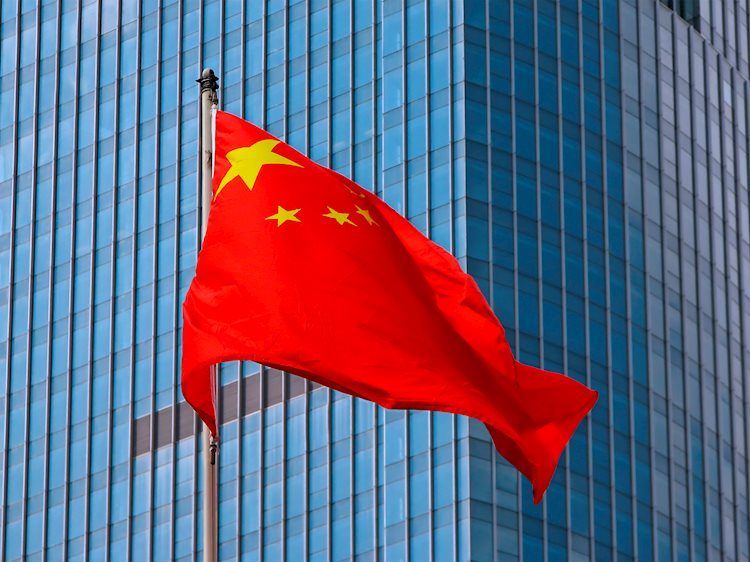- BABA stock loses 9%, moving below $80.
- Revenue for the fiscal Q2 misses consensus by $230 million.
- Management decides against spinning off the cloud business for now.
- Alibaba issues a $1 annual dividend to holders of ADS shares.
Alibaba (BABA) stock closed at $79.10, down 9.15%, on Thursday. The market did not appreciate the Chinese e-commerce leader’s fiscal second-quarter earnings results on Thursday. Alibaba missed the quarter’s sales consensus by $230 million. Management has also decided against spinning off its cloud business due to US semiconductor restrictions.
The cash-strong company still introduced a dividend for foreign investors, who have been disappointed by the failure of BABA stock to rebound from a 75% sell-off that began more than three years ago.
US stocks are beginning Thursday’s session at a loss following three straight days of optimism and even euphoria. Cisco (CSCO) and Palo Alto Networks (PANW) both traded lower in line with Alibaba as both technology stocks presented reduced guidance for the present quarter and the full year. Walmart (WMT) beat consensus on its quarter but warned of a slowdown in consumer spending beginning in the second half of October. This news rattled the stock market.
Alibaba Stock Earnings: Another earnings beat, another revenue miss
The good news was Alibaba’s top line – $2.14 per share, which was 5 cents better than Wall Street Consensus. Adjusted earnings for owners of American Depositary Shares (ADS) rose 21% from a year ago.
Revenue rose 8.5% from a year ago to $30.81 billion but missed the consensus for $31.04 billion. It has become a common phenomenon for Alibaba to beat consensus for earnings but miss consensus for sales, which have largely consolidated around the $30 billion mark over the past three years. Management said that revenue was somewhat reduced due to Alibaba focusing on higher-quality revenue streams and giving up on lower-margin, project-based revenue.
Management also introduced a $1 annual dividend for ADS shareholders, which will be paid on January 18, 2024 for shareholders of record on December 21. This gives Alibaba stock close to a 1% forward dividend yield.
The most prominent news from management’s quarterly release is that Alibaba will hold off on spinning off its cloud business following the Biden administration’s new export controls for advanced computing chips. Management felt that the cloud segment would not be able to achieve a worthwhile valuation in a spin-off due to concerns about the US’s new semiconductor policy.
Both its logistics segment, Cainiao, and its digital commerce segment are still in the process of raising external funding for a spin-off. During the fiscal second quarter, Alibaba spent $1.7 billion buying back 18.6 million ADSs.
Dow Jones FAQs
The Dow Jones Industrial Average, one of the oldest stock market indices in the world, is compiled of the 30 most traded stocks in the US. The index is price-weighted rather than weighted by capitalization. It is calculated by summing the prices of the constituent stocks and dividing them by a factor, currently 0.152. The index was founded by Charles Dow, who also founded the Wall Street Journal. In later years it has been criticized for not being broadly representative enough because it only tracks 30 conglomerates, unlike broader indices such as the S&P 500.
Many different factors drive the Dow Jones Industrial Average (DJIA). The aggregate performance of the component companies revealed in quarterly company earnings reports is the main one. US and global macroeconomic data also contributes as it impacts on investor sentiment. The level of interest rates, set by the Federal Reserve (Fed), also influences the DJIA as it affects the cost of credit, on which many corporations are heavily reliant. Therefore, inflation can be a major driver as well as other metrics which impact the Fed decisions.
Dow Theory is a method for identifying the primary trend of the stock market developed by Charles Dow. A key step is to compare the direction of the Dow Jones Industrial Average (DJIA) and the Dow Jones Transportation Average (DJTA) and only follow trends where both are moving in the same direction. Volume is a confirmatory criteria. The theory uses elements of peak and trough analysis. Dow’s theory posits three trend phases: accumulation, when smart money starts buying or selling; public participation, when the wider public joins in; and distribution, when the smart money exits.
There are a number of ways to trade the DJIA. One is to use ETFs which allow investors to trade the DJIA as a single security, rather than having to buy shares in all 30 constituent companies. A leading example is the SPDR Dow Jones Industrial Average ETF (DIA). DJIA futures contracts enable traders to speculate on the future value of the index and Options provide the right, but not the obligation, to buy or sell the index at a predetermined price in the future. Mutual funds enable investors to buy a share of a diversified portfolio of DJIA stocks thus providing exposure to the overall index.
Alibaba stock forecast: BABA descends just above support at $78
Alibaba stock has formed a Doji candle just below the $80 handle an hour into the Thursday session. This is not too far above the $78 support structure that held up in both May 2022 and May 2023. If it fails to hold, that could send BABA stock back to the $58 and $64 support band that held up a major sell-off in October 2022.
To regain interest from bulls, BABA needs to overtake the $82 support level and then upend resistance in the vicinity at and above $88.
BABA daily stock chart
